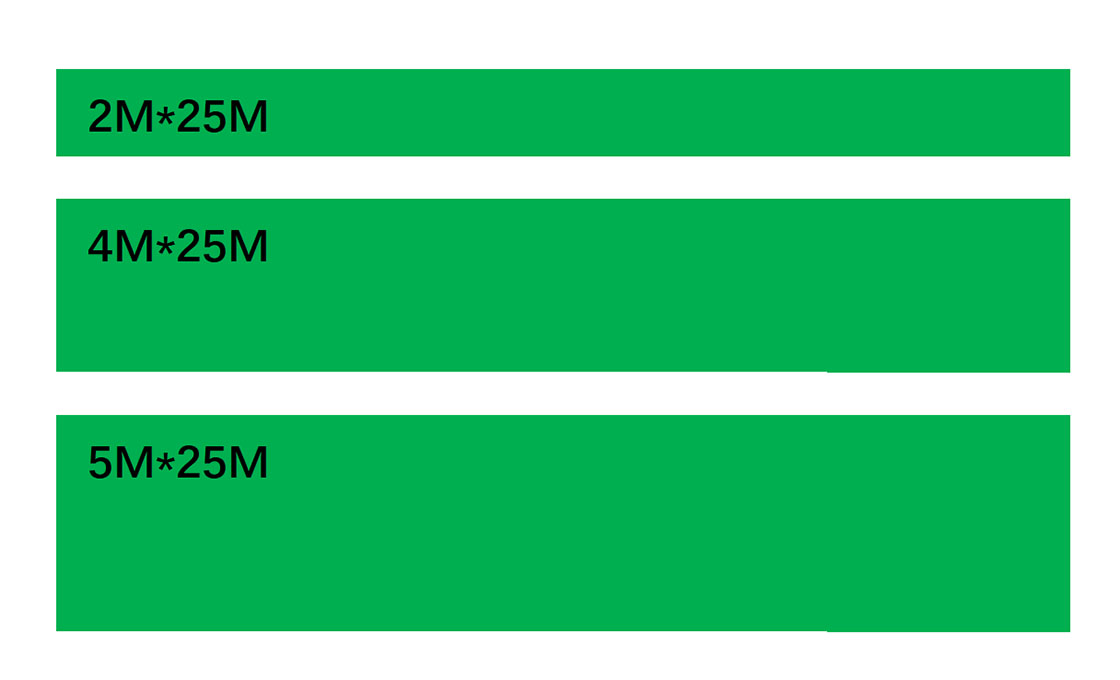
Stand Sizes of Artificial Grass
Following its acclaimed 1966 appearance at the US Astrodome, the aesthetics of artificial grass have continued to improve – growing into an authentic alternative to grass yielding no mud, needing no sunlight, and requiring next to no maintenance.
Most modestly priced lawns pay for themselves within four years – a sound investment that saves around 55 gallons of water per square foot and approximately £200 every year.
Whether the intention is to pave a play area, furnish a fitness zone, or equip an entertaining space, this robust, realistic grass substitute remains popular worldwide.
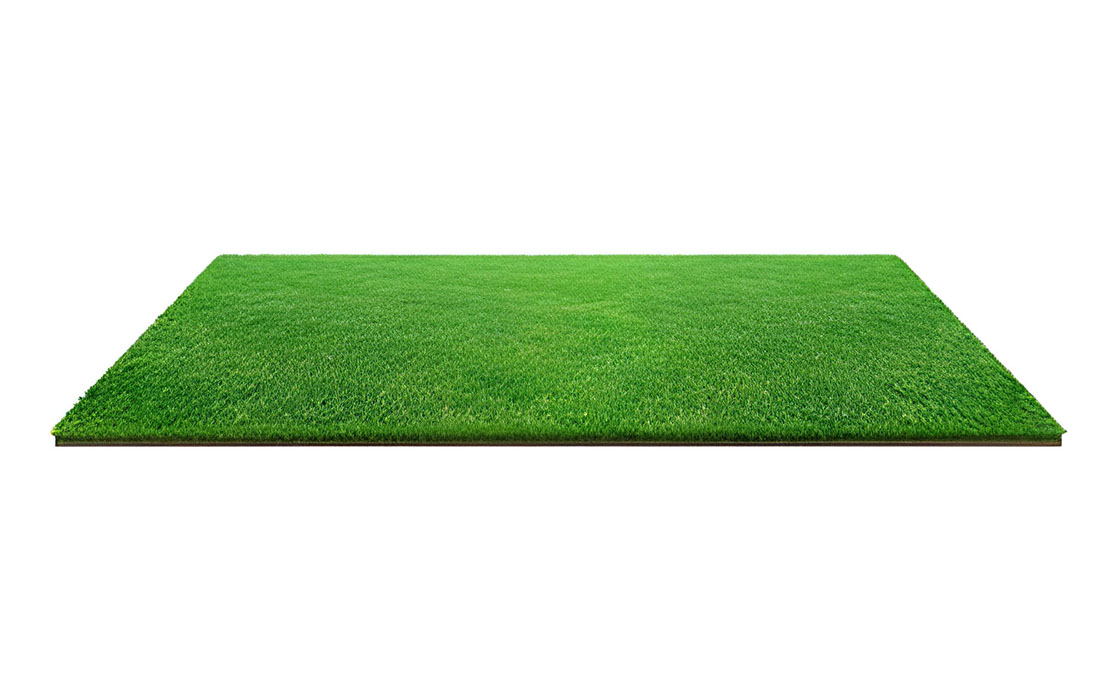
Contents
Sizes of Artificial Grass Rolls
Artificial grass size can refer to:
- Grass Width
- Grass Length
Grass Width (Roll Width)
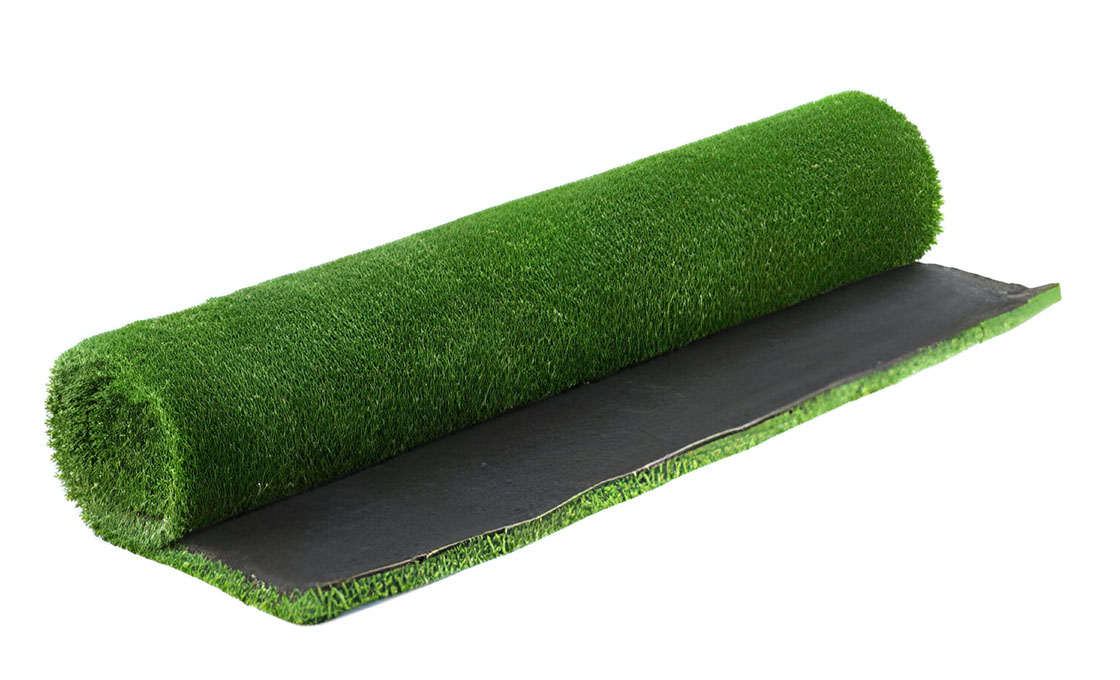
Artificial grass comes in 4 industry standard widths: 2m, 4m, and 5m, and custom widths:
- 2-meter wide roll: This width covers smaller outdoor spaces such as cozy gardens, courtyards, and lawn strips. This artificial grass width is ideal for balconies, patios, pet patches, and ornamental areas.
- 4-meter wide roll: This popular width covers most home and garden needs, as well as smaller sports courts, playgrounds, and play/activity areas. It is also suitable for commercial premises, such as smoking areas and greenery areas of workplaces.
- 5-meter wide roll: 5-meter wide artificial grass sometimes falls under custom-size artificial grass. It is ideal for covering larger areas such as professional sports fields and stately grounds with minimal joins (and therefore less grass wastage).
- Custom width roll: As a niche product with a specialist demographic, custom width artificial grass roll is not as widely sold as pre-cut roll. It is available from a narrower range of companies and only in certain countries.
Grass Length (Roll Length)
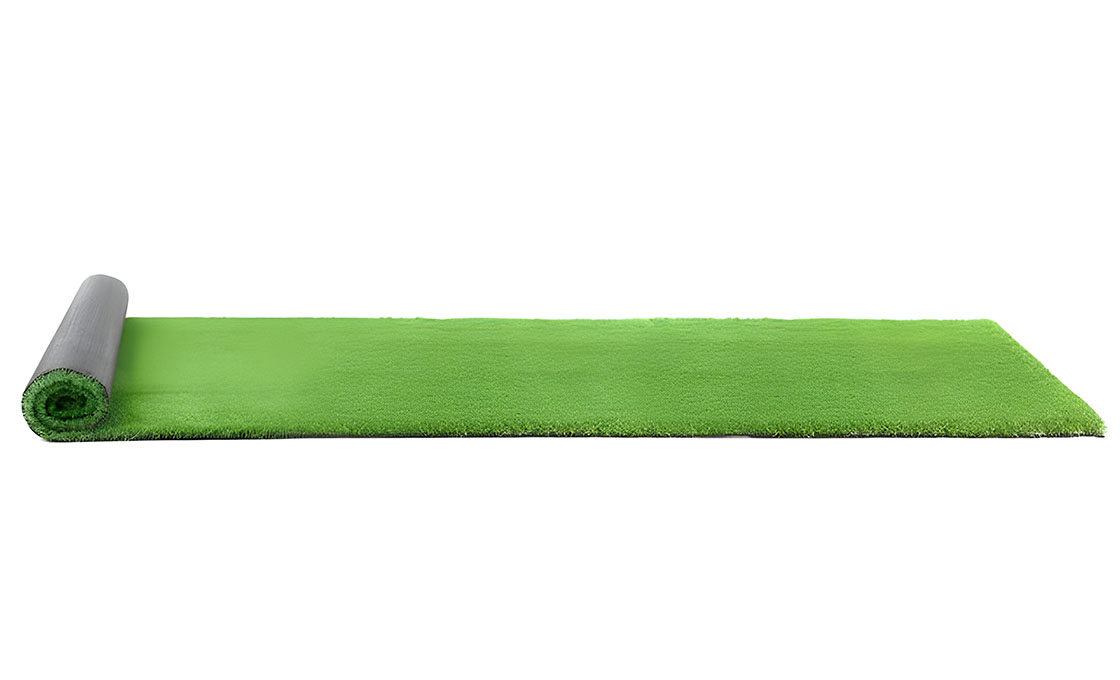
Some artificial grass manufacturers can custom produce artificial grass in almost any width.
However. the default length of artificial turf for most factory machines is 20 or 25 meters, as these are the widths in the most market demand.
It is advisable to order slightly over the dimensions of artificial grass required to cover any possible errors in measurements or cutting.
Assuming the artificial grass roil ordered will be narrower by 6 inches is a good rule of thumb to ensure your space is covered, and will allow for any joins needed during installation.
For smaller indoor projects, keeping the roll length to 15 meters or less will ensure easy access when carrying the grass roll through doorways, rooms, and up/down stairs.
Similarly, for outdoor projects where access via standard internal doorways is necessary, ensure any artificial grass rolls passing through are 15 meters or below in length.
What Size of Artificial Grass Rolls Do I Need?
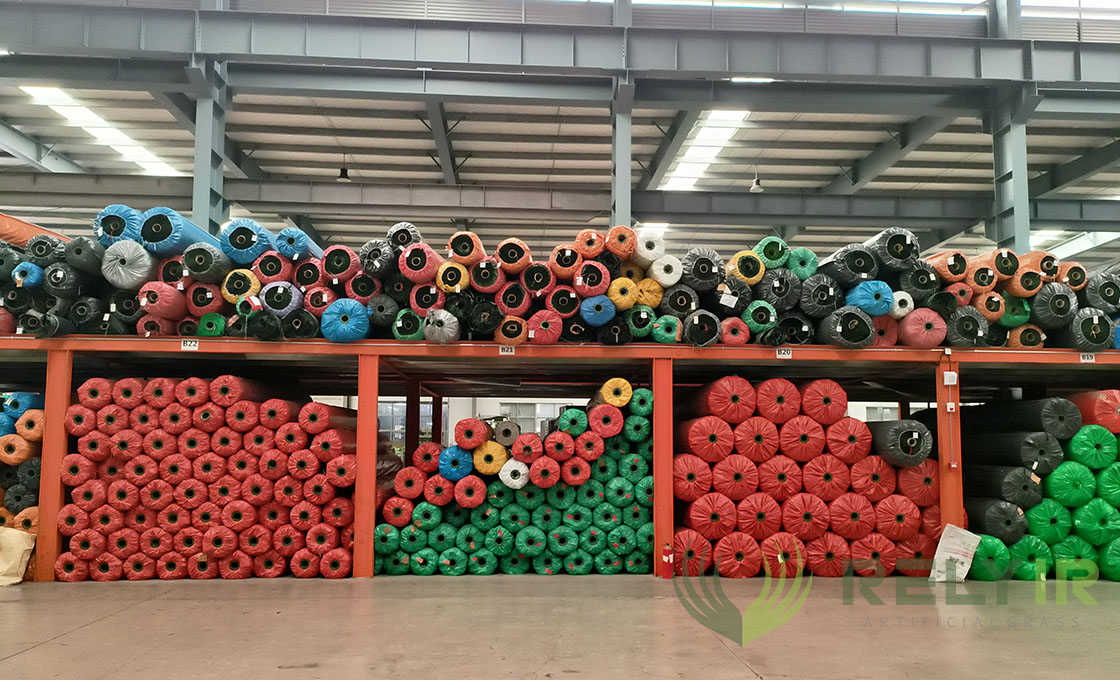
Roll Width/Length: Measuring
The most efficient way to ensure that you order the correct width and length of grass is to measure your space accurately.
You can do this yourself – but if you’re taking the task on, it is wise to measure both the width and the length more than once to make your numbers as precise as possible:
- Measure the space: Pay special attention to any unusual angles or shapes in your space.
- Calculate square footage: Once you have the width and length measurements, multiply the length by the width to give you the total square footage of artificial grass needed to cover your space.
- Add a little extra: Add between 5-10% onto the measurements of artificial grass you order for your space to account for error and wastage.
If the width of your space is over 5 meters, you will need more than one roll of turf – which will require joins in your grass.
Maintain one grass type for a uniform look and keep joins to a minimum, as these spots are especially vulnerable to damage and wear and tear.
Sizes of Artificial Grass Rolls: Pros & Cons
Grass Size 2m x 25m
Pros:
- Suitable for smaller areas (e.g. balconies, courtyards)
- Easy to transport/install
- Most affordable size
Cons:
- Large spaces need more joins
- Limited application
Grass Size 4m x 25m
Pros:
- Safest option if exact size unknown
- Covers most turfing need
- Widely available
Cons:
- High performance-cost ratio
- Popular lines can sell out fast
Grass Size 5m x 25m
Pros:
- Suitable for bigger spaces (e.g. sports fields)
- Needs a few (if any) joins
- Less waste for larger areas
Cons:
- More costly
- Heavy to transport/install
Custom Size Grass
Pros:
- Tailor-made to fit
- No joins required
Cons:
- Niche product
- Most expensive
How Heavy Is an Artificial Grass Roll?
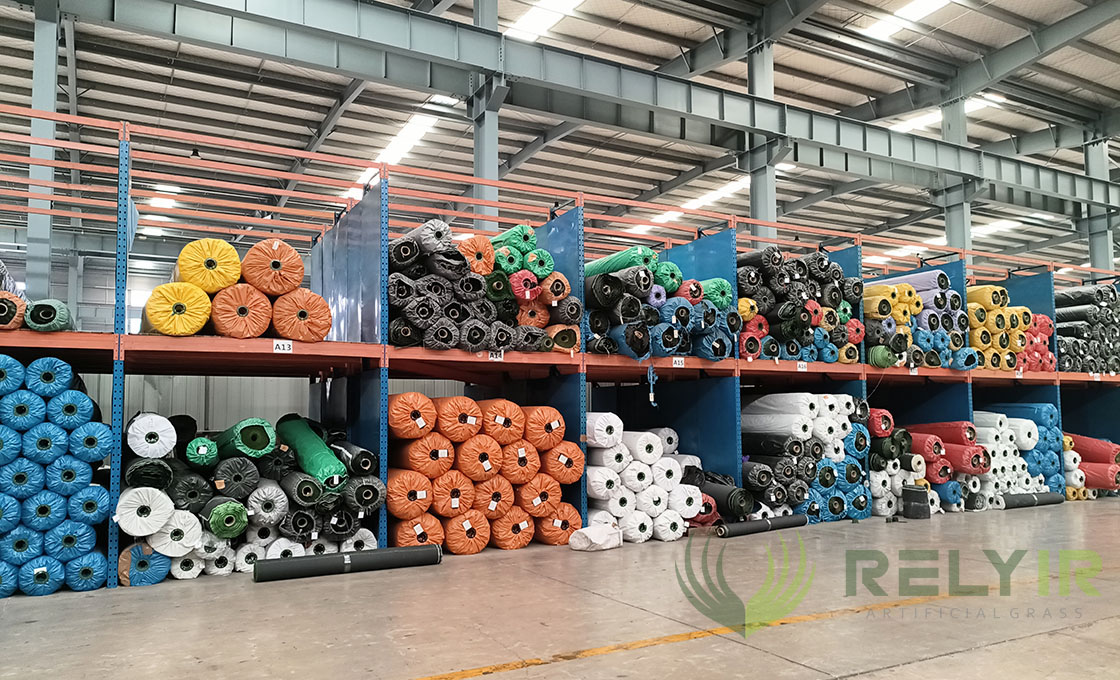
The weight of artificial grass is the gross weight per meter squared minus the weight of the base material. The result is the pile (or face) weight.
Face weight is a general quality benchmark, as the heavier the face weight, the thicker and tougher your grass is likely to be.
However, as face weight measures the grass mass volume only, a heavy face weight can indicate that the artificial grass is thick or tall (or a combination of both). Therefore, it is wise to consider the overall specifications of a particular grass when determining its quality.
Depending on pile density and the material used, the face weight of artificial grass ranges between 30 oz and 90 oz per square meter, averaging 60oz per square meter.
| Grass Roll Size
| Average weight (60oz per sqm) | Minimum weight (30oz per sqm) | Maximum weight (90oz per sqm) |
| 2m*25m | 3000oz = 85kg | 1500oz = 42.5kg | 4500oz = 127.6kg |
| 4m*25m | 6000oz = 171kg | 3000oz = 85kg | 9000oz = 255kg |
| 5m*25m | 7500oz = 212.6kg | 3750oz = 106.3kg | 11250oz = 319kg |
It is recommended to hire a professional to lay your artificial grass – especially if it is at the heavier, higher quality end.
Artificial Grass: Cost
The cost elements of artificial grass fall into the following categories:
- Grass type (nylon, polypropylene, polyethylene, and pile height & thickness)
- Installation costs (depending on the size & shape of the site and DIY vs. professional installation)
- Site Preparation (E.g. disposal of garden waste)
Cost of Artificial Grass Rolls
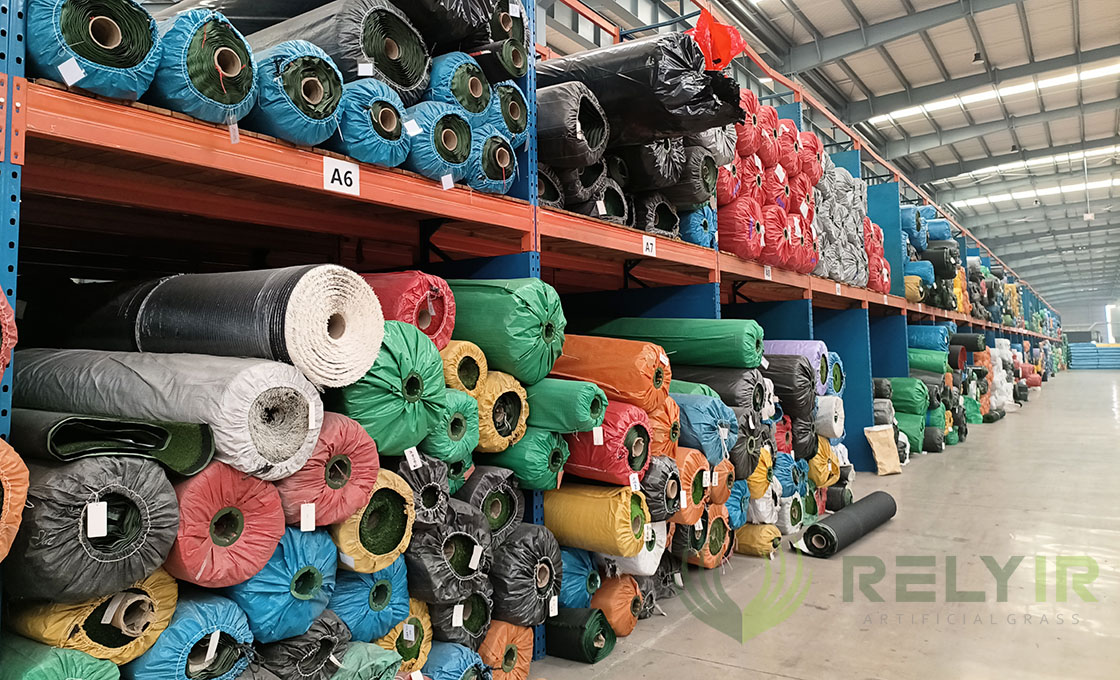
The first – and most crucial – aspect of cost to consider is the turf itself, as the material, density, and height of your grass all affect the ultimate price.
Grass types can split into roughly three quality tiers: budget, standard, and premium:
- Budget range grass: Usually crafted from either polypropylene or polyethylene, this artificial grass range is the least robust or realistic but also the most affordable. Its low pile density makes it suitable for areas not designed for heavy activity. Expect to pay between $11-17 per square meter for a budget grass.
- Standard range grass: Made from polyethylene or nylon, mid-range artificial grass boasts a good pile density and level of authenticity, with multi-toned strands for extra realism. This type of grass is suitable for most domestic purposes, such as play areas, pets, garden parties, and light sports, with prices falling between $17-35 per square meter.
- Premium range grass: Usually nylon-based, premium artificial grass has a thick pile density, with luxurious, lifelike grass that is as close to the real thing in sight and touch as you can get. This lush turf is tough enough to stand up to even the most frequent and heavy activity, so expect to pay between $35-100 per square meter for this top-of-the-range turf.
The approximate average, minimum, and maximum cost of artificial grass in standard widths and lengths are shown below (excluding extra surplus):
| Grass Roll Size
| Average Cost ($50.50per sqm)
| Minimum Cost ($11 per sqm)
| Maximum Cost ($100 per sqm)
|
| 2m*25m | $2525 | $550 | $5000 |
| 4m*25m | $5050 | $1100 | $10,000 |
| 5m*25m | $6312.50 | $1375 | $12,500 |
Installation Costs
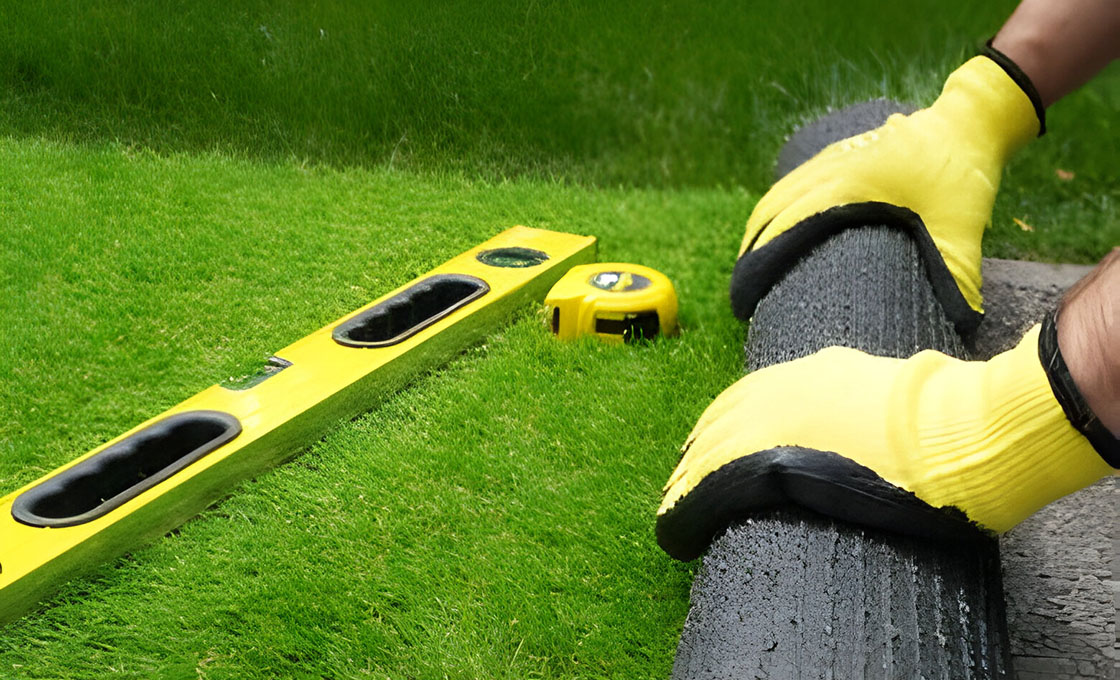
The second aspect to consider is the cost of installation. Most tradespeople suitable for installing artificial grass (such as gardeners) will charge an hourly rate and may price the job based on the cost per square meter of grass to lay.
The average cost to professionally install artificial grass varies between $350-$750 daily.
The factors influencing the overall installation costs include:
- Size, shape, & location of the space
- Preparation of the space
Size, Shape & Location
With a professional installation, you pay for their labor and time. As larger spaces require more of this, the bigger the space to cover, the more it will cost.
Larger spaces may also require grass joins and some turf wastage. Similarly, if your space has any unusual features (such as an area that is harder to access), this could also drive the installation cost up due to the extra effort required.
The location of your space is also relevant. If the space is in a remote or elevated area, this could also make installation costlier due to the extra time necessary to transport the materials.
Depending on the size of your space (and any other work needed), installation usually takes 1-3 days to complete.
Site Preparation
The surface for your grass installation must be capable of drainage and sufficiently level to lay your grass evenly.
If the site is uneven, waterlogged, housing rubble or old grass, or needs any other preparation, it will increase the installation costs.
For some site surfaces that are difficult to work with, underlay is a possible option. It can make laying the grass safer and simpler – saving time, effort, and money in preparing awkward ground.
How to reduce installation costs?
If you are concerned that installation costs may blow your budget, there are ways to make the costs of installing your artificial turf more manageable:
- DIY tasks: The recommendation is to leave the installation in the capable hands of skilled professionals. However, tasks such as turning topsoil, removing rubble, and ensuring entryways to the site are obstacle-free are just some ways to save on spending.
- Get multiple quotes: Use your money wisely by asking several skilled tradespeople for an installation quote. You can later compare and shortlist them to get the best value.
- Hire equipment: If your site needs the work of specialist tools or equipment, it may cost less to hire these yourself rather than a professional doing so and adding this to your installation bill.
FAQs
- What is the largest artificial grass width?
Answer: The largest width of artificial grass commonly available in the industry is 5 meters – sufficient for almost any conceivable turfing need.
- What colors are available?
Answer: Artificial grass can be customized to match almost any color.
In addition to various shades of green, artificial grass is available in black, blue, grey, silver, red, and yellow.
Mid and high-range artificial grass products in green are usually a blend of different tints and hues to create a more realistic grass look.
Relyir can match the grass color to a photo or sample with 85-95% accuracy.
- How long does artificial grass last?
Answer: – Artificial grass is designed to be durable; However, there are varying levels to this, with certain grass types better suited to some purposes than others.
How long your artificial grass will last depends on various factors, including a) material, b) pile height and density, c) fitting & joins, and d) use and care.
Artificial grass is made from one of 3 materials: polyethylene, polypropylene, or nylon (or a mixture). With regular average usage, nylon grass – the most robust – can last up to 20 years, with polyethylene lasting around 10-12 years and polypropylene grass (resilient but the least realistic) lasting between 12-15 years.
The lifespan of your lawn will also depend on the density and length of your grass. Generally, the thicker and taller your turf, the longer it will last.
Using care and common sense concerning your artificial grass with basic cleaning, avoiding too much regular, heavy traffic – and ensuring efficient installation with minimal joins – will go a long way to keeping your lawn looking luxurious for longer.
- What is the packaging?
Answer: Most artificial grass comes rolled in bags for ease of use. However, some manufacturers (such as Relyir) are happy to box it for your request.
A Reliable Manufacturer
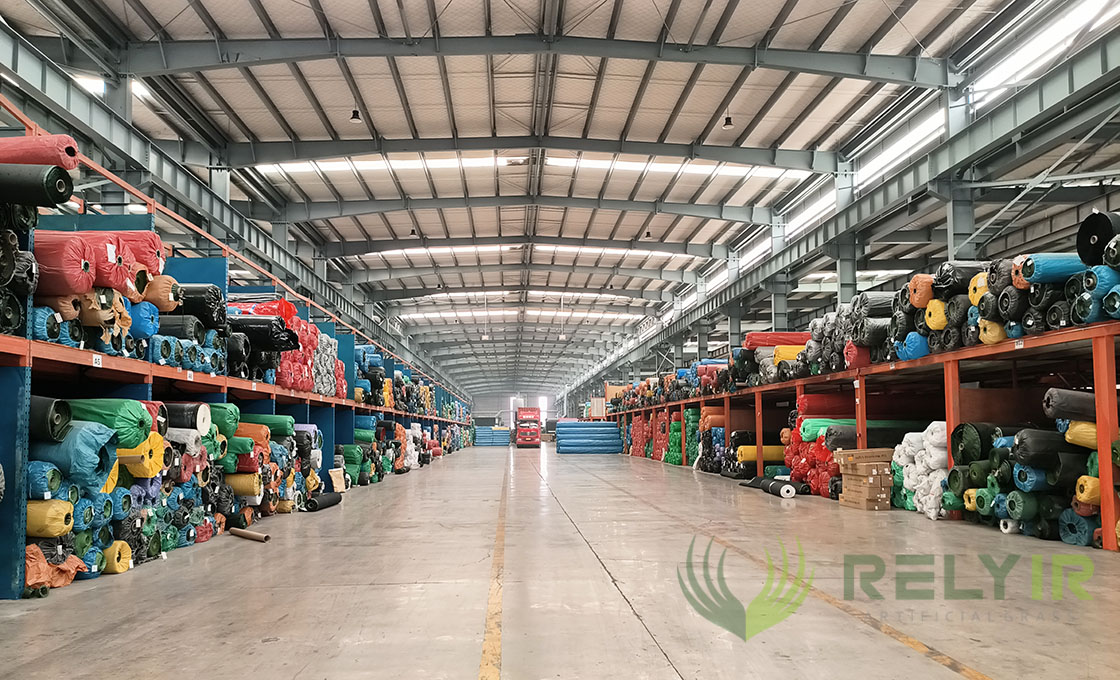
Founded in 2006, Relyir Artificial Grass has rapidly emerged as a leading force in the artificial turf industry. Based in China, our company specializes in the production of premium artificial grass systems for diverse applications such as sports arenas, residential landscaping, and colorful design solutions. Our commitment to technological innovation and excellence has established us as pioneers in providing “professional customized services” for artificial grass. With 18 years of dedicated experience, Relyir has crafted a reputation for superior product performance and unmatched customer service across over 50 countries.
